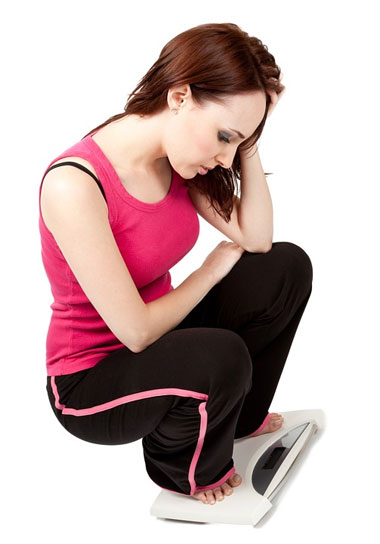Skip the Scale and Focus on Fat Loss

You wake up in the morning and step on the scale. How much do you weigh?
That piece of information can be deceptively inaccurate. And it can work a number on your self-esteem, your eating and exercise habits, and even your overall health. Your weight isn’t the best indicator of overall health and fitness. Why? Muscle is more dense than fat.
Here’s another way to look at the fat vs. weight issue. If you hit the gym to lift weights, say three days a week for a month, and ate a healthy diet, you’ll likely build muscle and lose fat.
But you might not know it if the only way you measure your progress is a weekly weigh-in. Lose fat, but gain muscle (which weighs more), and you might actually gain weight. See the flaw in only looking at the scale?
It’s a way to measure fat loss, but to get the full picture of your efforts from diet and exercise, you should also pay attention to:
- Body dimensions (like waist circumference, and changes in measurements for hips, chest, neck, etc.)
- Body fat percentage. Some scales can estimate body fat percentage.
- Performance (Are you getting stronger, faster, building endurance?)
- Clothes (The way your clothes fit can be another self-check to measure your progress)
There’s nothing wrong with a daily weigh-in. It can be a good way to remind yourself to make smart food choices, practice portion control, and avoid overeating. But you have to remember, your weight doesn’t tell the whole story. If you want to lose weight, or maintain a healthy weight, two things have the biggest impact.

- Regular exercise. If you’re on a mission to lose weight, aim for 60 minutes of aerobic exercise per day, and at least two days of strength training per week. If you don’t have a lot of weight to lose, or want to maintain your weight, 30 minutes of exercise a day may be sufficient.
- Healthy eating. It’s even more important that exercise. Ever heard the phrase, “You can’t out-exercise a bad diet?” It’s true. For example, if you wolf down a 1,000-calorie milkshake, it would take 3 to 4 hours of walking to burn that many calories. Practice portion control and track calories, and you won’t have to work as hard to lose weight.
Looking for healthy meal options to support your fat loss goals? Check out the selection of Portion Control Meals.



 INSURANCE CUSTOMERS CLICK HERE!
INSURANCE CUSTOMERS CLICK HERE!
